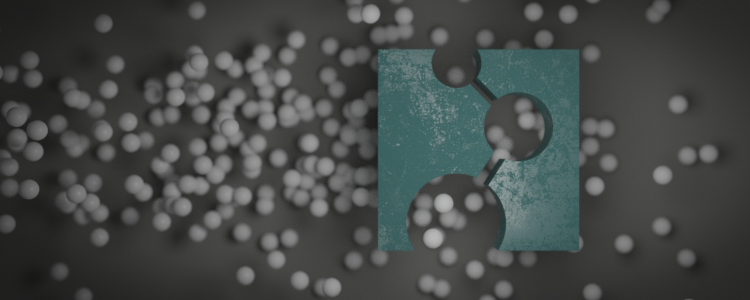
Methods | Dept. Landfester
We combine the synthesis of new polymers, materials and nanocolloids with state-of-the-art physico-chemical characterization techniques and advanced cell culture experiments.
Electron microscopy
Smart synthesis of polymers and tailored material development inevitably require likewise characterization skills. Besides many other characterization methods the infrastructure of the MPI-P offers an advanced electron microscopy core facility with adequate instrumentation in association with the necessary expertise. Our spectrum comprises the examination of a variety of different samples like organic and inorganic nanoparticles, polymers and soft matter, biological specimens and any combination of these.
The following electron microscopic examination methods can be performed in the Core facility EM:
- Transmission electron microscopy (TEM)
- Scanning electron microscopy (SEM)
- Energy dispersive X-ray spectroscopy (TEM-EDS, SEM-EDS)
- Electron energy loss spectroscopy and image filtering (EELS, EFTEM)
- Cryo preparation and imaging (Cryo-TEM, Cryo-SEM)
More information can be found here:
Polymer Analysis
In the polymer analysis core facility, we perform current state-of-the-art characterization of synthetic and biological polymers and nanomaterials. We regularly tailor the characterization approach for each new sample to include optimization of measurement conditions (solvent, temperature, columns, filtration, and separation techniques). Our main fields of expertise are chromatography, thermal analysis, light scattering and the determination of basic physico-chemical properties. We routinely use the following physicochemical characterization techniques:
- Size exclusion chromatography (SEC/GPC and SEC/GPC-MALLS)
- High-performance liquid chromatography (HPLC)
- Field flow fractionation (AF-FFF)
- Static and dynamic light scattering (SLS/DLS)
- Refractive index increment (dn/dc)
- Thermogravimetric analysis (TGA)
- Differential scanning calorimetry (DSC)
- Differential scanning fluorimetry (nanoDSF)
- Isothermal titration calorimetry (ITC)
- Viscometry
- Density determination of liquids and solids
- Determination of refractive index of liquids and solids
Additionally, we advance the characterization of polymers and nanomaterials in biological media such as protein solutions, plant extracts or blood plasma. In this context, we closely collaborate with different groups throughout the institute to combine the expertise of polymer analytics with e.g. electron microscopy, fluorescence correlation spectroscopy, mass spectrometry or nonlinear optics.
More information can be found here:
Colloid Analysis
The laboratory for colloid analysis gives access to a variety of analytical techniques to characterize the physicochemical properties of dispersions. We can measure the size of dispersions by dynamic light scattering (Malvern, Nano S90), surface charges by zeta-potential measurements (Malvern, Zetasizer Nano Z), and surface and interfacial tension with a Du Noüy ring/ Wilhelmy plate tensiometer (Dataphysics, DCAT25).
We also have a variety of tools to prepare well-controlled emulsions using high-shear homogenization (IKA, Ultra-Turrax), ultrasonication (Branson, W450D), and microfluidization (microfluidic corp, LM10 and LV1).
Inductively coupled plasma optical emission spectroscopy
With inductively coupled plasma optical emission spectrometry (ICP-OES) we perform elemental analysis on a wide range of samples to determine e.g.
- trace metal content in reaction products,
- elemental compositions of binary systems,
- absolute analyte concentrations in aqueous solutions.
We typically measure samples stemming from e.g.
- colloidal dispersion,
- products of chemical syntheses,
- polymerization reactions,
- biological samples.
For each scientific question, we develop methods to digest the sample containing the analyte, transferring it into an aqueous based liquid, suitable for injection in the ICP-OES. Our Horiba Activa ICP-OES allows us to quantify most elements (excluding carbon, oxygen, nitrogen and halogens) with typical optimal measurement ranges between 1-20 mg/L.
Proteomics and Cell Culture
In the AG Mailänder, we run a cell culture lab for general cell culture purposes at a genetic safety level S1. Standard equipment like laminar air flows, incubators, microscopes, liquid nitrogen cell storage etc. are available and can be used in collaboration with the group.
Besides this we are equipped with a label-free, quantitative proteomics setup consisting of an ultra performance liquid chromatography (UPLC) coupled to a state-of-the-art mass spectrometer, a Waters Synapt G2Si. We run the system with a nanoESI ionization source and use a determined proteomics software to automatically evaluate the data and determine the proteome of complex protein mixtures. This enabled us to determine and elucidate the protein corona of nanoparticles in complex protein mixtures. This is highly interesting as the protein corona changes the fate of nanocarriers in cell cultures but also in living organisms. It is a key factor to determine the biological function of a nanocarrier system.